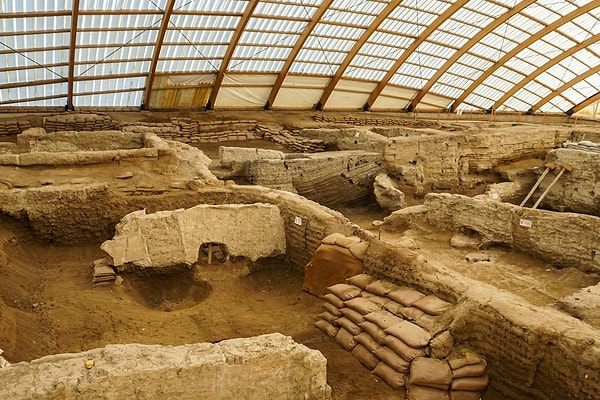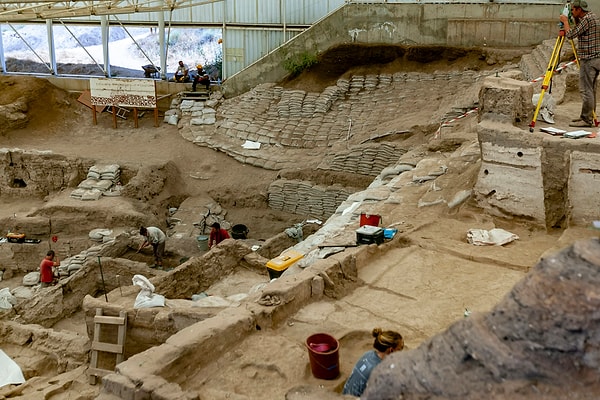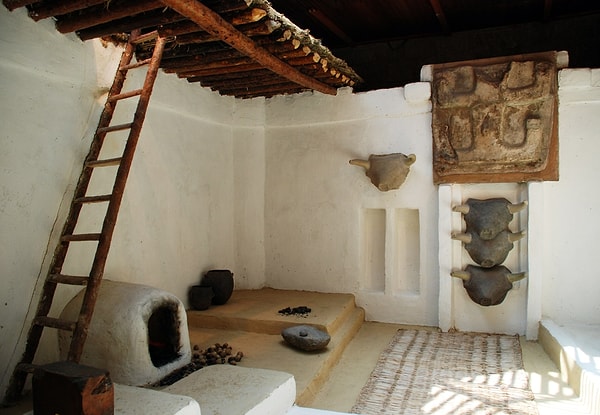Exploring Çatalhöyük: What to Know About One of the World’s Oldest Settlements
Turkey is a country that attracts the world's attention not only with its natural beauties but also with its archaeological sites that shed light on human history. One of the most remarkable of these sites is Çatalhöyük Neolithic City, located in the Çumra district of Konya province. This unique archaeological site, which is on the UNESCO World Heritage List, is considered one of the oldest settlements in Anatolia and the world.
Dating back approximately 9,000 years to the Neolithic Age, Çatalhöyük bears the traces of the first settled life, agriculture and social organisation in human history. So what does this fascinating settlement tell us? Which artefacts have been found? And how to visit it?
The answers to all these questions await you in the rest of the article.👇
Where is Çatalhöyük?

Çatalhöyük is located within the borders of the Küçükköy Neighbourhood of Çumra district of Konya. It is approximately 45 kilometres from Konya city centre and approximately 15 kilometres from Çumra district centre. It is located in the southeast of the Konya Plain, in an area now surrounded by agricultural land.
Discovery and Excavation History of Çatalhöyük

Çatalhöyük was first discovered in 1958 by British archaeologist James Mellaart. Mellaart's excavations, carried out between 1961 and 1965, attracted the world's attention. In 1993, excavations were resumed under the leadership of Prof. Dr. Ian Hodder, and many important finds have been unearthed to date.
The excavations revealed layers belonging to the Neolithic (7400-6200 BC) and Chalcolithic (6200-5200 BC) periods. The artefacts provide clues about early agriculture, domestic architecture, art, belief systems and social structure.
Settlement Structure and Architectural Features

One of the most remarkable features of Çatalhöyük is the plan and layout of the houses.
In this site:
Houses are built adjacent to each other.
There are no streets or roads; the houses are entered from the roof.
The buildings are generally made of mudbrick.
Inside the houses, there are hearths, storage areas, sitting platforms and graves.
This architectural style shows that community life and the use of common space were highly developed.
Important Historical Artefacts Found at Çatalhöyük

The most remarkable finds obtained as a result of the excavations are as follows:
1. Wall Paintings and Reliefs
The hunting scenes, animal figures and geometric patterns on the house walls reflect the artistic competence and symbolic mindset of the period.
2. Mother Goddess Figurines
The frequent depiction of female figures indicates that the cult of the mother goddess and the belief in fertility were widespread. These figurines are interpreted as symbols of fertility.
3. Tombs
The dead were usually buried inside the house, under the floorboards. This is associated with the belief in the afterlife and respect for ancestors.
4. Ceramics and tools
Finely crafted pottery, obsidian (volcanic glass) knives, stone axes and bone needles provide information about the daily life of the period.
What is there at Çatalhöyük today?

Today, Çatalhöyük is open to visitors and consists of both an open-air archaeological site and a visitor centre:
The South and North Mounds are open to visitors.
There are walking paths within the covered excavation areas.
The visitor centre features some replica artefacts found during excavations, information boards and interactive exhibits.
The actual excavations are still ongoing; visitors can witness active excavations during the summer months.
How to get to Çatalhöyük?

You can use the following methods to reach Çatalhöyük from Konya:
By Private Car: Follow the D330 highway from Konya towards Çumra. After Çumra, you can reach Küçükköy Neighbourhood by following the signs. The journey takes about 45-50 minutes.
Public Transportation: You can reach the Çumra district from Konya bus station by minibus or buses. However, there is no direct public transportation from Çumra to the mound. Taxi or private shuttle service is required.
Tours: Some tourism agencies from Konya centre organise regional cultural tours including Çatalhöyük.
Visit Information

Visiting Hours: During the summer period, it is usually open between 09:00-17:00. Hours may change during winter.
Entrance Fee: As of 2025, entrance to Çatalhöyük costs 5 Euros.
Guidance: Guided tours or information boards are available. Private visits with an archaeologist can also be arranged with prior notice.
Keşfet ile ziyaret ettiğin tüm kategorileri tek akışta gör!

Send Comment